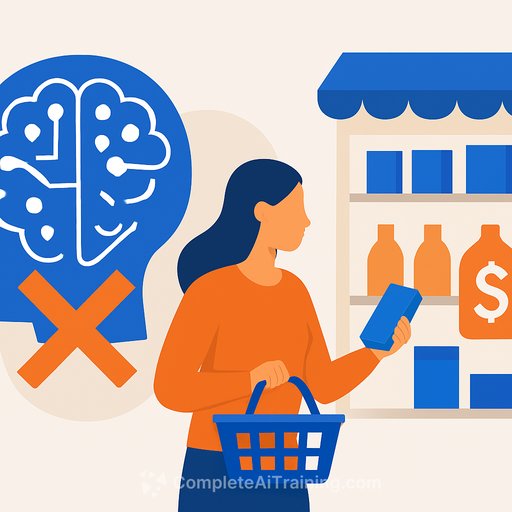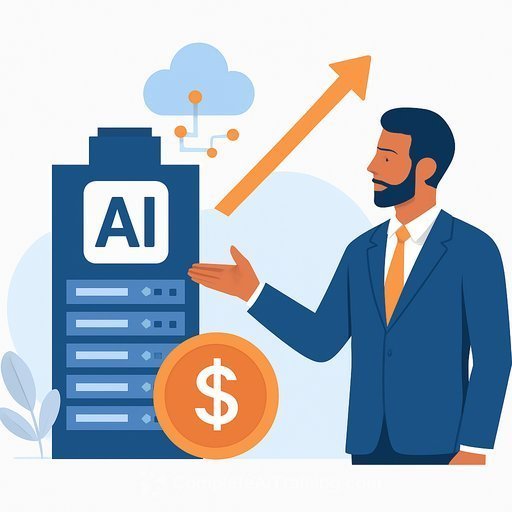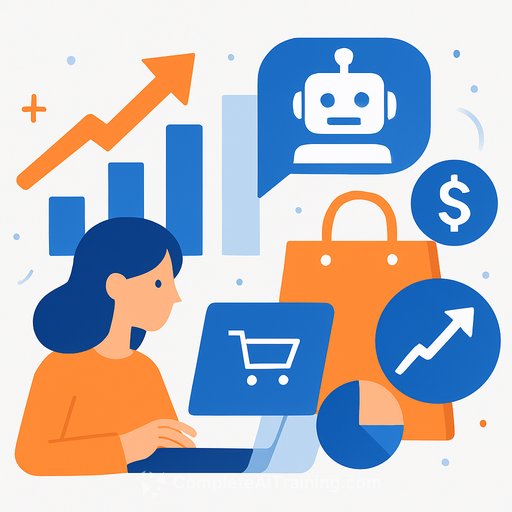Empower the buyer, not the algorithm: A sales playbook for AI that sells more and gets returned less
We've been chasing smarter algorithms. The latest research says we've been aiming at the wrong target. The edge isn't the AI itself-it's how much autonomy you give the shopper using it.
Published in MIS Quarterly, the work led by Paul A. Pavlou and colleagues shows a simple truth with big sales impact: when consumers feel the decision is theirs, they choose better, buy more confidently, and return less.
The blind spot: "uniqueness neglect"
Most recommenders predict what works for the average buyer. That's the problem. They miss the personal stuff that actually closes the sale-values, context, hidden motives, the story behind the purchase.
When the buyer feels in control, they bring those factors into the decision. Fit improves. Confidence goes up. Regret goes down.
Proof from the field
Across five lab experiments and a live retail study, the pattern held: more autonomy, better results. In the store test, giving shoppers a way to use AI privately on their own phones-rather than on a store device-boosted sales and cut returns. That small shift created "private self-focus," nudging people to honor what actually matters to them.
This isn't a UX nicety. It's a revenue and margin lever.
A practical playbook for sales and retail leaders
Design principles: humility in AI
- Choose-with, not choose-for: Offer ranked options plus simple controls (budget, fit, style, values). Make the AI a guide, not a judge.
- Explain, don't assert: "We prioritized X because you told us Y." One line of rationale builds trust.
- Editable preferences: Let shoppers tweak and save preferences inline. No settings maze.
- Easy opt-out: Clear "Show me everything" or "Turn off recommendations" link.
- Human override: Prominent compare, sort, and filter options that always work-even if AI fails.
On-site and in-store tactics
- Own-device shopping: Place a QR code near key categories to "Use AI on your phone." This single move increases autonomy and reduces social friction.
- Starter questions that feel personal: "How will you use this?" "What matters most today?" Keep it to 2-3 choices.
- Micro-commitments: Slider or toggle for priorities (price, longevity, sustainability, comfort). Real-time updates show control.
- Transparent trade-offs: "Selecting comfort may increase price by ~10%." No surprises after the click.
- Return-proofing prompts: Before checkout, ask: "Anything here you're unsure about?" Offer size/fit guides or a quick chat.
For SaaS and B2B sales
- Pitch the autonomy story: "Our AI reduces returns by helping buyers decide for themselves. You keep the margin and the trust."
- Show controls in the demo: Make preference editing and opt-out visible and fast.
- Quantify value: Tie lift to two metrics buyers care about: conversion rate and return rate.
- Offer a low-risk pilot: 30-60 days, clear KPIs, weekly insights on why customers chose what they did.
Microcopy that increases autonomy
- "Help me choose" → "Let me set my priorities"
- "Recommended for you" → "Based on what you told us"
- "Best match" → "Closest match to your choices"
- "Why this?" → "Why we ranked it this way"
Experiments to run this quarter
- Device context A/B: Store device vs. own phone via QR. Measure conversion and return rate.
- Rationale on/off: Show 1-line explanations vs. none.
- Preference sliders: Add 2-3 sliders and test their impact on checkout completion.
- Pre-checkout "uncertainty" nudge: Offer size/fit help when hesitation is detected.
Metrics that matter
- Conversion rate (overall and among AI users)
- Return rate (SKU-level and reason codes)
- AOV (do autonomy-driven journeys increase basket quality?)
- Time-to-first-decision and assist rate (how often AI was used)
- Confidence/NPS post-purchase for AI vs. non-AI paths
Quick ROI sketch you can share
If 30% of sessions use AI, conversion for those sessions rises by 8%, and returns on AI-influenced orders drop by 12%, the blended lift is meaningful-even before counting saved reverse logistics. Small autonomy shifts can pay for themselves in weeks.
Why this works
People buy stories they believe about themselves. Autonomy lets that story surface in the moment of choice. The research calls out "uniqueness neglect"-AI ignores what makes each buyer different-so your job is to design the journey to bring those differences forward.
Beyond retail
The same pattern applies to health plans, financial products, and education tools. Anywhere personal meaning drives decisions, autonomy-first AI builds trust and reduces regret.
Sources and further reading
- Enhancing AI-Assisted Purchase Decisions: The Role of the Sense of Autonomy (MIS Quarterly)
- Self-Determination Theory: Why autonomy changes behavior quality
Want hands-on training for sales teams building autonomy-first AI flows?
Explore practical courses by job role here: Complete AI Training - Courses by Job.
Bottom line: don't try to outsmart your buyer. Give them the steering wheel. Your KPIs will thank you.
Your membership also unlocks:






